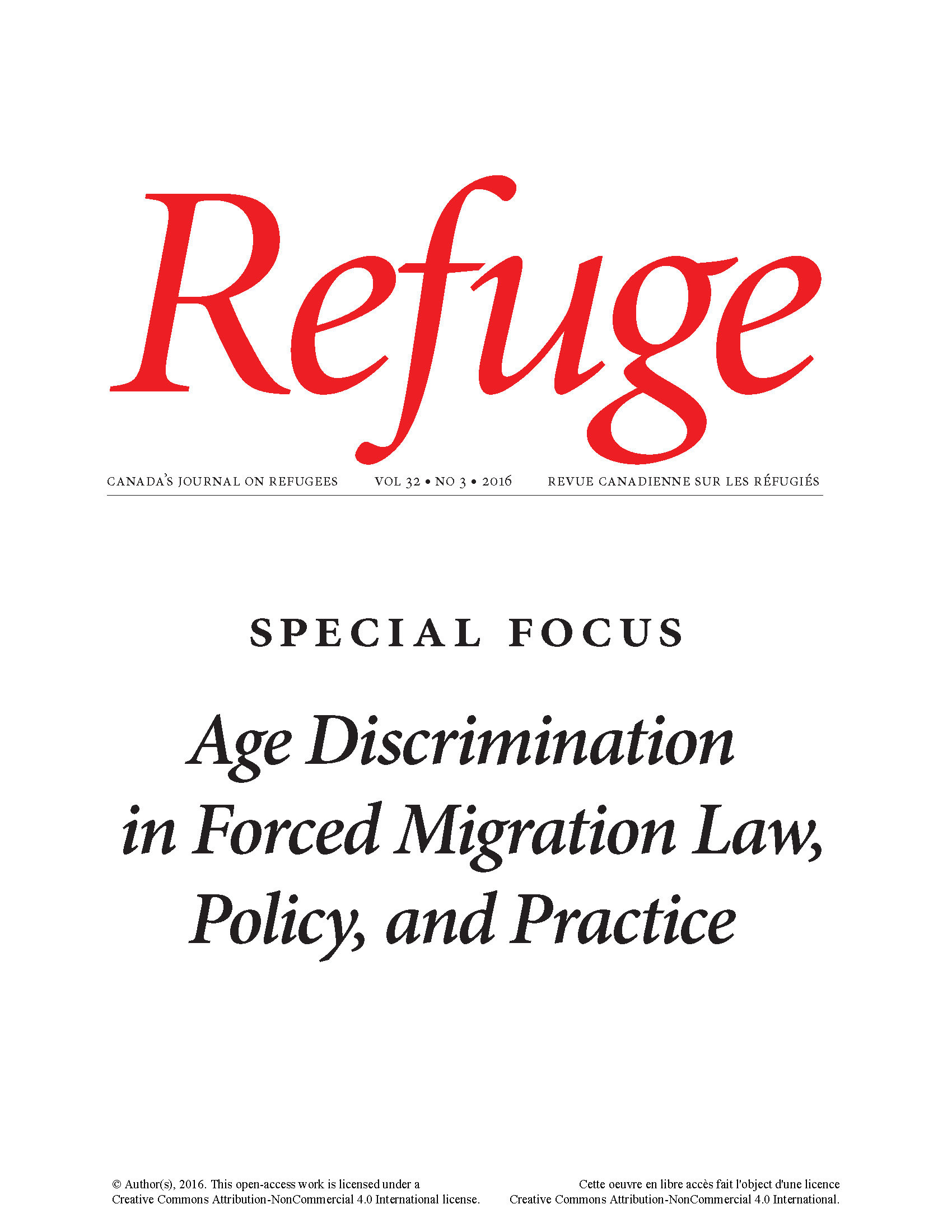“Imposter-Children” in the UK Refugee Status Determination Process
DOI:
https://doi.org/10.25071/1920-7336.40371Keywords:
United Kingdom, Afghan refugees, refugee status determination, credibility, age assessments, unaccompanied minors, imposter-child, genderAbstract
This article describes and analyzes an emerging problematic in the asylum and immigration debate, which I cynically dub the “imposter-child” phenomenon. My preliminary exploration maps how the imposter-child relates to and potentially influences the politics and practices of refuge status determination in the United Kingdom. I argue that the “imposter-child” is being discursively constructed in order to justify popular and official suspicion of spontaneously arriving child asylum-seekers in favour of resettling refugees from camps abroad. I also draw connections between the discursive creation of “imposter-children” and the diminishment of welfare safeguarding for young people. Further complicating this situation is a variety of sociocultural factors in both Afghanistan and the United Kingdom, including the adversarial UK refugee status determination process, uncertainty around how the United Kingdom can“prove” an age, and a form of “triple discrimination” experienced by Afghan male youth. Through unearthing why the “imposter-child” is problematic, I also query why it is normatively accepted that non-citizens no longer deserve protection from the harshest enforcement once they “age out” of minor status.
Metrics
Downloads
Published
How to Cite
Issue
Section
License
Copyright (c) 2016 Stephanie J. Silverman

This work is licensed under a Creative Commons Attribution-NonCommercial 4.0 International License.
Refuge authors retain the copyright over their work, and license it to the general public under the Creative Commons Attribution-Non Commercial License International (CC BY-NC 4.0). This license allows for non-commercial use, reproduction and adaption of the material in any medium or format, with proper attribution. For general information on Creative Commons licences, visit the Creative Commons site. For the CC BY-NC 4.0 license, review the human readable summary.







